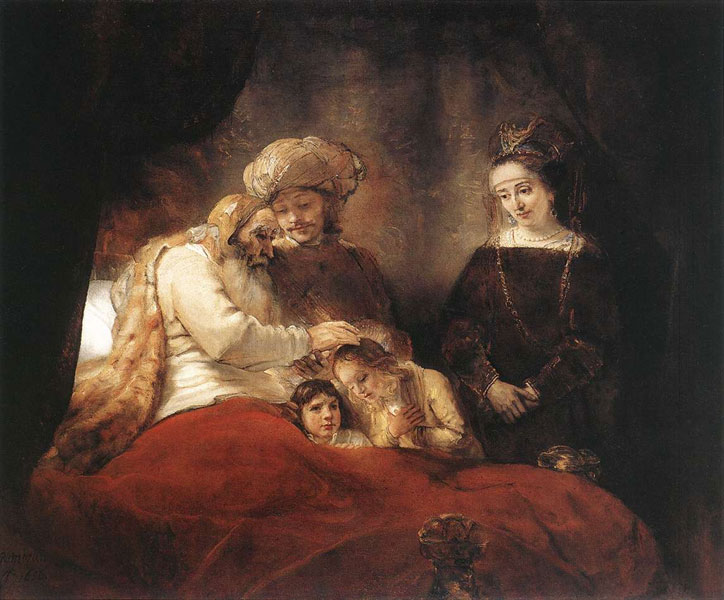As I mentioned last week, the lovely image featured in a Mizrah printed in the United States around 1880, is a copy of Rembrandt’s “Jacob Blessing the Sons of Joseph”.
My colleague, Rabbi Carl Perkins, has brought to my attention a short paper by Jamie Buettner that sums up the research regarding this painting. Buettner, who teaches art history in Merced, California, quotes a number of scholars, in particular, Jewish historian Simon Schama, who feels that the inclusion of Asenath in the scene reflects the general rise in the status of women at that time in Holland. He likewise speculates that Rembrandt may have been aware of midrashic traditions about Asenath’s character and her close relationship with her father in law through contact with his friend Rabbi Menasseh ben Israel.
I am still very new to the field of Judaica and art history and only beginning to learn just how influential artist like Rembrandt and Matthäus Merian when it comes to images reproduced in Hebrew books. This influence is but one example of what William Gross constantly talks about when he teaches using items from his collection: Jewish culture, at least as reflected in artifacts such as ritual objects and sacred books, has always been open to outside influences and not tightly isolated as some more traditional minds would have us think. This is nothing new to those of us who constantly study and examine our religious and cultural tradition with a critical eye. But what is new, at least for me, how particularly pleasing to the eye – critical or not – the study of Judaica can be.





Just wonderful to read, I love Rembrandt,s paintings, works of genius. I learned new perspective of reading the story.hidden in the painting.